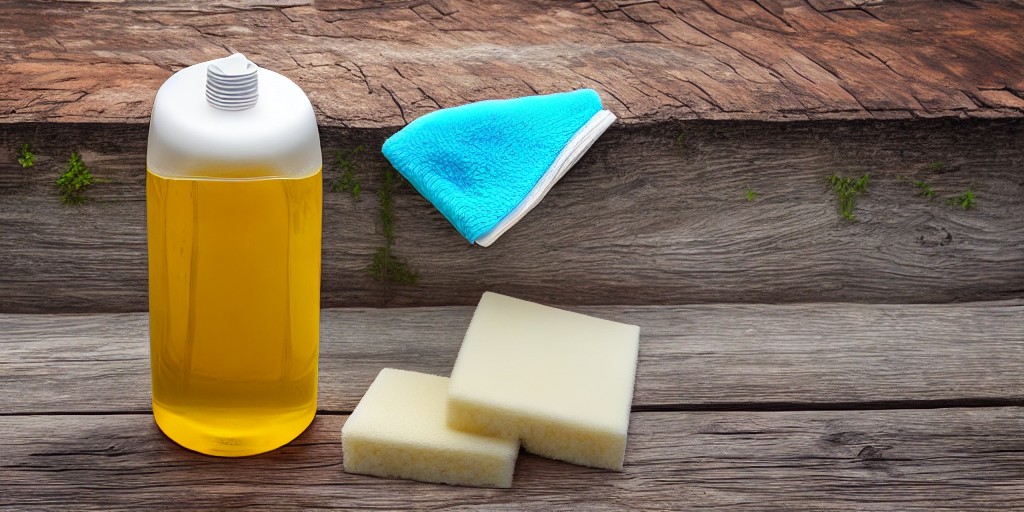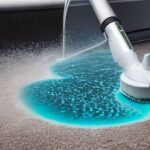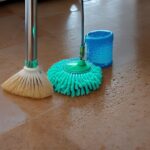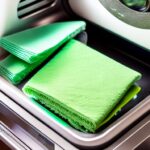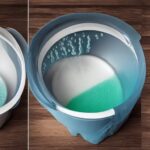As a homeowner or a DIY enthusiast, you may be wondering whether Clorox, a popular household bleach, is safe to use on wood. After all, wood is a delicate material that can easily get damaged if you use the wrong cleaning products. Let’s explore whether Clorox can be used on wood and the best practices for cleaning wood surfaces effectively.
Understanding Clorox
Clorox is a brand of bleach that contains sodium hypochlorite, an effective disinfectant that can kill germs and bacteria. Bleach is a powerful cleaning agent that can be used to remove stains and disinfect various surfaces, including kitchen countertops, bathroom tiles, and even laundry. However, bleach can also be harsh and corrosive, and it can damage some surfaces if not used properly.
Can Clorox Be Used on Wood?
The short answer is yes, you can use Clorox on wood, but with caution. Bleach can be an effective cleaner for removing tough stains, mold, and mildew from wood surfaces. However, it’s important to dilute the bleach with water to reduce its strength and prevent damage to the wood. Additionally, you should never leave bleach on wood for too long, as it can discolor or even warp the wood if not rinsed off promptly.
Types of Wood That Can Be Cleaned with Clorox
Not all types of wood are the same, and some are more delicate than others. Generally, hardwoods such as oak, maple, and walnut are more resilient and can withstand cleaning with bleach, while softwoods such as pine, cedar, and spruce may be more susceptible to damage. It’s always best to test a small, inconspicuous area of the wood before using bleach on the entire surface.
Precautions When Using Clorox on Wood.
To ensure the safety of your wood surfaces when using Clorox, follow these precautions:
- Wear protective gloves and eye goggles to prevent skin and eye irritation.
2. Dilute the bleach with water according to the instructions on the label.
3. Apply the solution to the wood using a soft cloth or sponge, and avoid using abrasive materials that can scratch the surface.
4. Rinse the wood with water immediately after cleaning to remove any residual bleach.
5. Dry the wood thoroughly with a clean towel to prevent water damage.
6. Avoid using bleach on painted or stained wood, as it can remove the color.
7. Keep children and pets away from the area until the wood is completely dry.
Alternatives to Clorox for Cleaning Wood.
If you’re uncomfortable using bleach on your wood surfaces, there are alternative cleaning solutions you can use that are gentler and less abrasive. These include:
White vinegar and water: Mix equal parts of white vinegar and water in a spray bottle and apply to the wood. Wipe with a soft cloth and rinse with water.
Olive oil and lemon juice: Mix equal parts of olive oil and lemon juice in a spray bottle and apply to the wood. Wipe with a soft cloth and buff with a dry cloth.
Baking soda and water: Mix 1 tablespoon of baking soda with 1 cup of water and apply to the wood. Wipe with a soft cloth and rinse with water.
Conclusion.
In summary, Clorox can be used on wood, but with caution. Dilute the bleach with water, avoid leaving it on the wood for too long, and rinse the wood thoroughly with water afterward. If you’re uncomfortable using bleach, there are alternative cleaning solutions you can use that are gentler and less abrasive. Remember to always test a small area of the wood first and follow safety precautions when cleaning your wood surfaces to avoid damage and ensure a safe cleaning experience.
By following these guidelines, you can effectively clean your wood surfaces with Clorox or alternative cleaning solutions, leaving them looking fresh and new.
FAQs on Can Clorox Be Used on Wood?
Can I use undiluted Clorox on wood?
No, you should never use undiluted Clorox on wood, as it can damage the surface. Always dilute the bleach with water according to the instructions on the label.
Can I use Clorox on painted or stained wood?
No, you should avoid using Clorox on painted or stained wood, as it can remove the color. Instead, use alternative cleaning solutions that are gentle and less abrasive.
How often should I clean my wood surfaces with Clorox?
It’s recommended to clean your wood surfaces with Clorox no more than once every six months to prevent damage.
Can I use Clorox to remove mold from wood?
Yes, Clorox can be effective in removing mold from wood surfaces. However, it’s important to dilute the bleach with water and follow safety precautions to prevent damage to the wood.
Can I use Clorox on outdoor wooden surfaces?
Yes, Clorox can be used on outdoor wooden surfaces, such as decks or fences. However, it’s important to follow the same precautions as indoor wood surfaces, such as diluting the bleach with water and rinsing thoroughly with water afterward.
